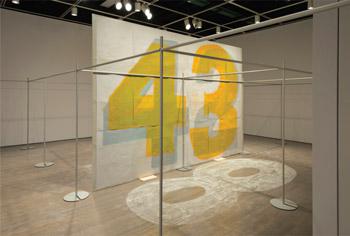The philosopher and activist Noam Chomsky once described anarchism as “a tendency in human thought” that is suspicious of domination, authority and hierarchy. As a political philosophy, it naturally contains many schools of thought, the vast majority of which are anti-capitalist.
This is worth keeping in mind when considering the challenging exhibition “Anarchism Without Adjectives: On the Work of Christopher D’Arcangelo, 1975–1979” at the Leonard and Bina Ellen Art Gallery. Described by curators Dean Inkster and Sébastien Pluot (in collaboration with Michèle Thériault) as a “form of ongoing research,” the exhibition represents the fifth iteration of a collaborative project that seeks to engage with the work of American conceptual artist Christopher D’Arcangelo (1955–79).
Active between 1975 and 1979, D’Arcangelo is known for a series of radical, unauthorized actions involving major New York museums. On January 31, 1975, for example, he chained himself to the door of the Whitney Museum during its famous biennial. Naked from the waist up, he spent more than 40 minutes in the cold with the following phrase stencilled on his back: “When I state that I am an anarchist, I must also state that I am not an anarchist, to be in keeping with the…idea of anarchism. Long live anarchism.”
Organizing an exhibition of D’Arcangelo’s work is challenging. His practice exists only as a set of documents now housed at the Fales Library and Special Collections of New York University. Rooted in anarchist philosophy, his practice also criticizes the neutrality of the exhibition space, curatorial control and the role of art in a capitalist society. “Anarchism Without Adjectives” attempted to navigate these facts by focusing on the archival. At its core is a set of video interviews with friends and colleagues of D’Arcangelo, including Lawrence Weiner and Daniel Buren. The videos are accompanied by the work of 10 contemporary artists (Pierre Bal-Blanc, Sophie Bélair Clément, Simon Brown, Ben Kinmont, Silvia Kolbowski, Pierre Leguillon, François Lemieux, Rainer Oldendorf, Émilie Parendeau and Nicoline van Harskamp) who either engage directly with D’Arcangelo’s legacy or with related issues concerning anarchism and its impact on conceptual and archival art practices and histories.
An admirable effort has been made to respect the spirit of the artist’s practice and the result is a complex and interesting exhibition. One caveat, however, is the lack of attention paid to issues of art and political economy and the ways in which the exhibition (and this review) participate in the commodification of D’Arcangelo’s work.
This is an article from the Winter 2014 issue of Canadian Art. To read more from this issue, visit its table of contents or—to read the entire issue—pick up a copy on newsstands, on the App Store or on Zinio until March 15, 2014. To get every issue of Canadian Art delivered straight to your mailbox, visit canadianart.ca/subscribe.

 Installation view of “Anarchism Without Adjectives: On the Work of Christopher D'Arcangelo, 1975—1979” 2013 / photo Paul Litherland Installation view of Anarchism Without Adjectives: On the Work of Christopher D'Arcengelo, 1975—1979
Installation view of “Anarchism Without Adjectives: On the Work of Christopher D'Arcangelo, 1975—1979” 2013 / photo Paul Litherland Installation view of Anarchism Without Adjectives: On the Work of Christopher D'Arcengelo, 1975—1979







